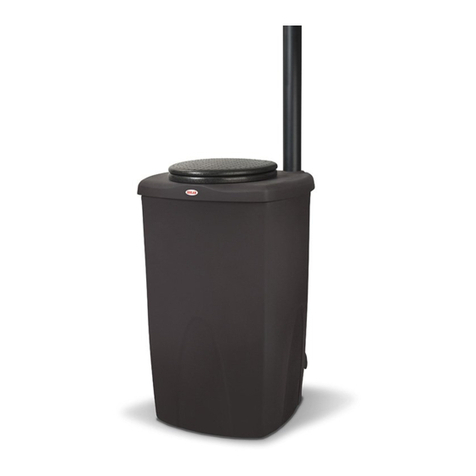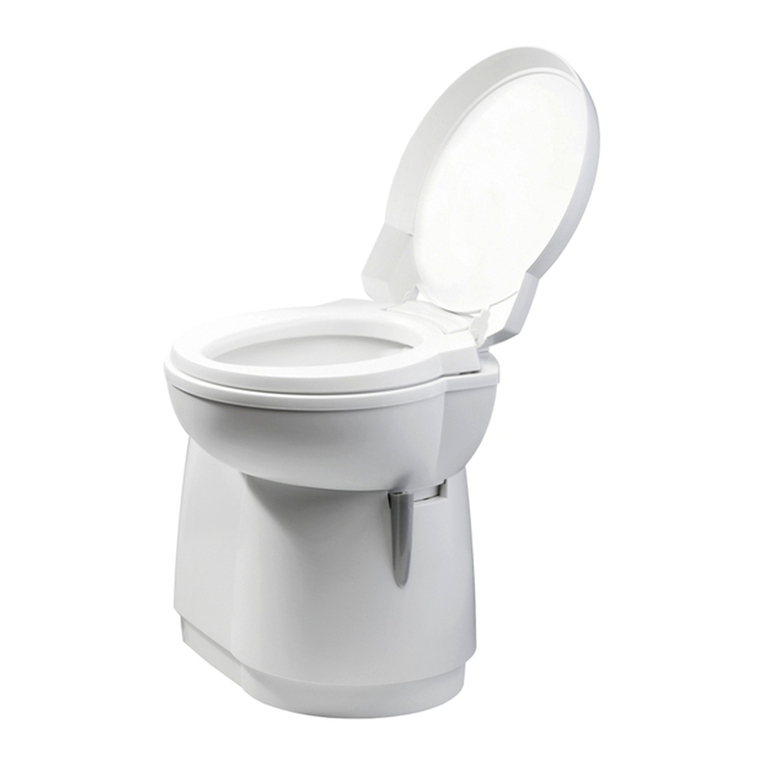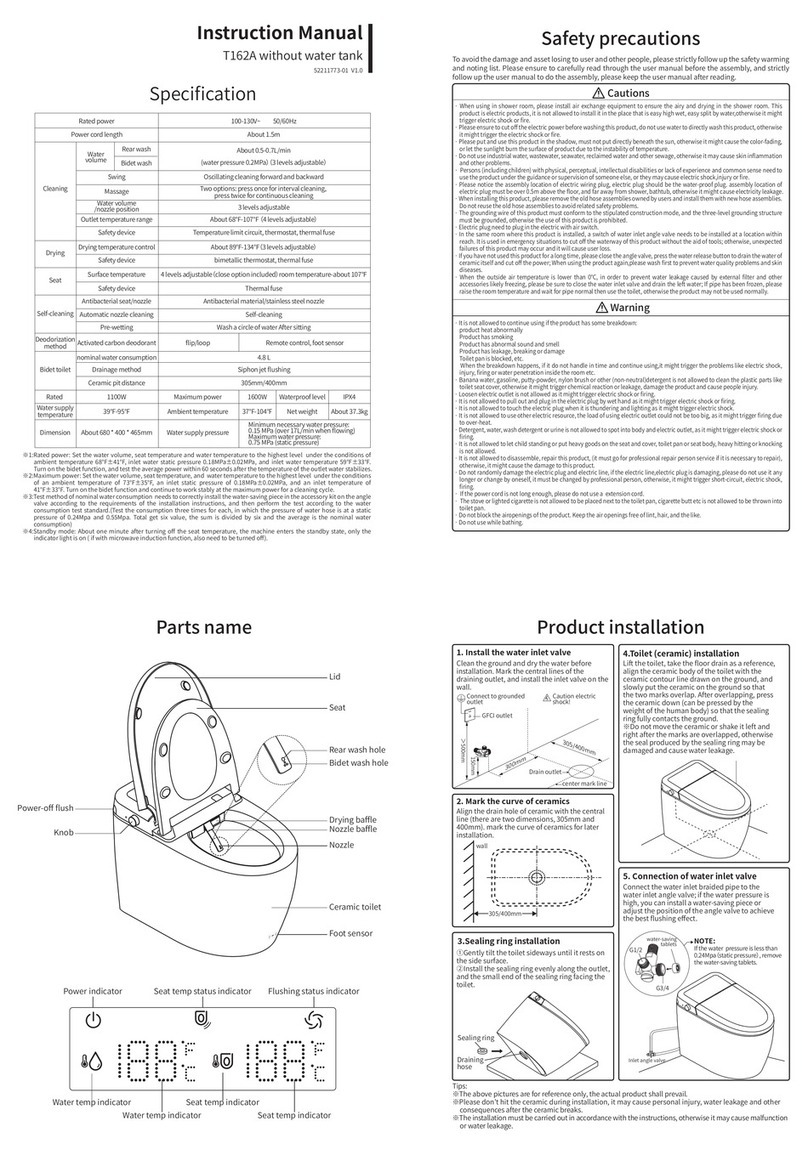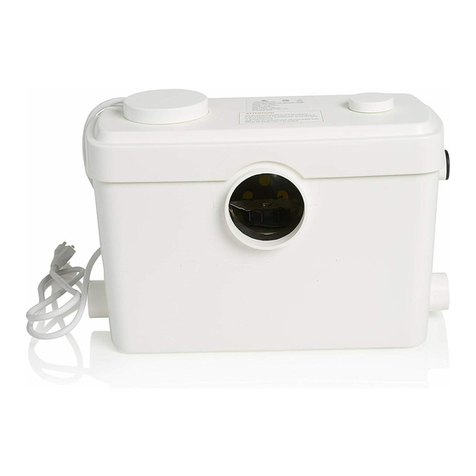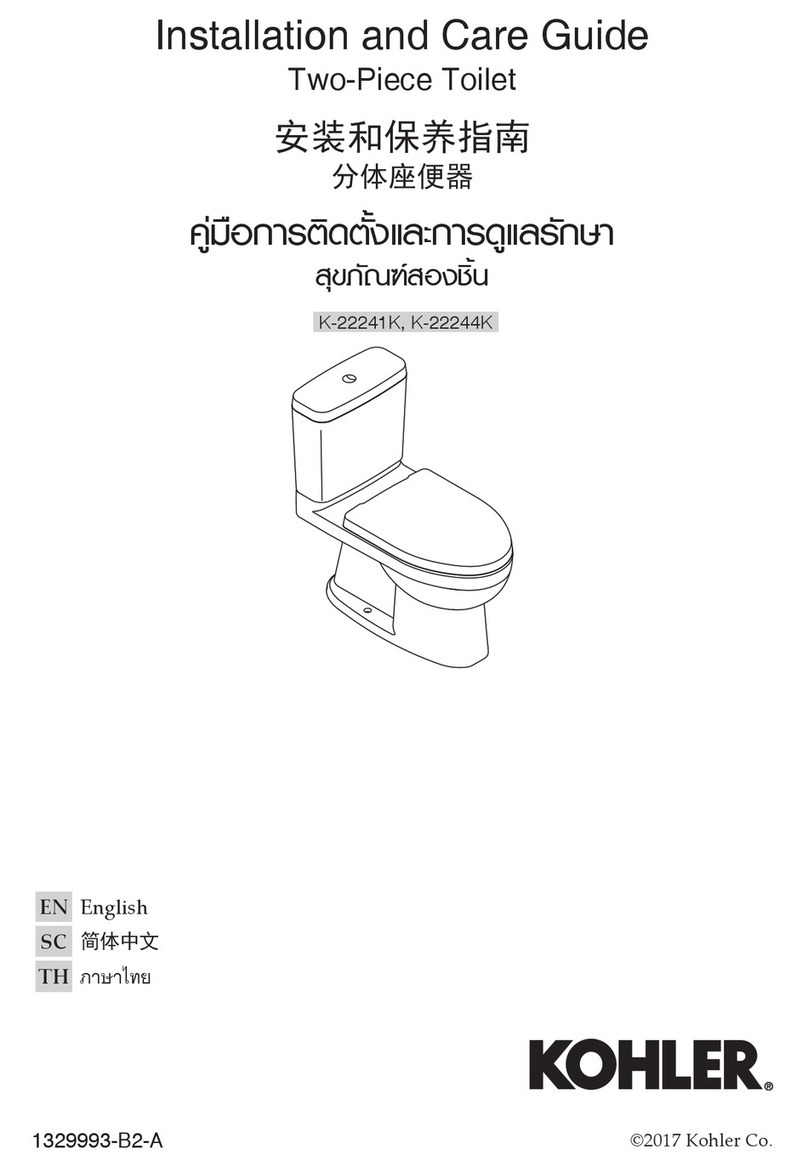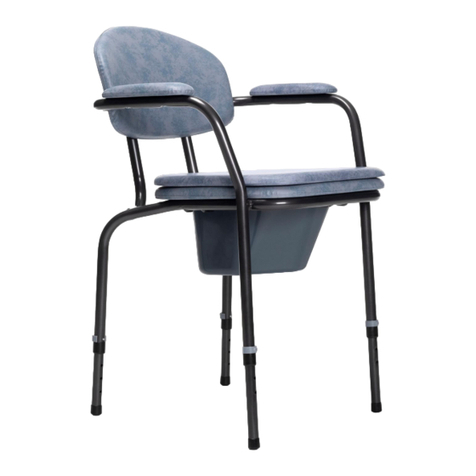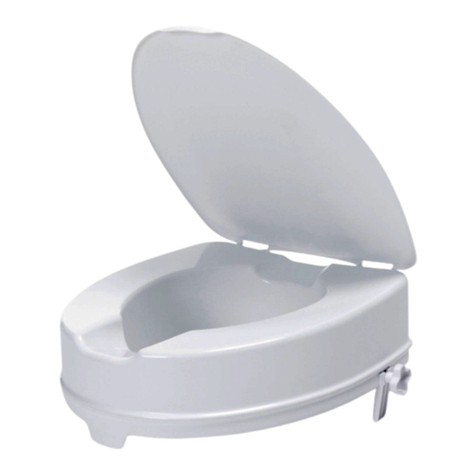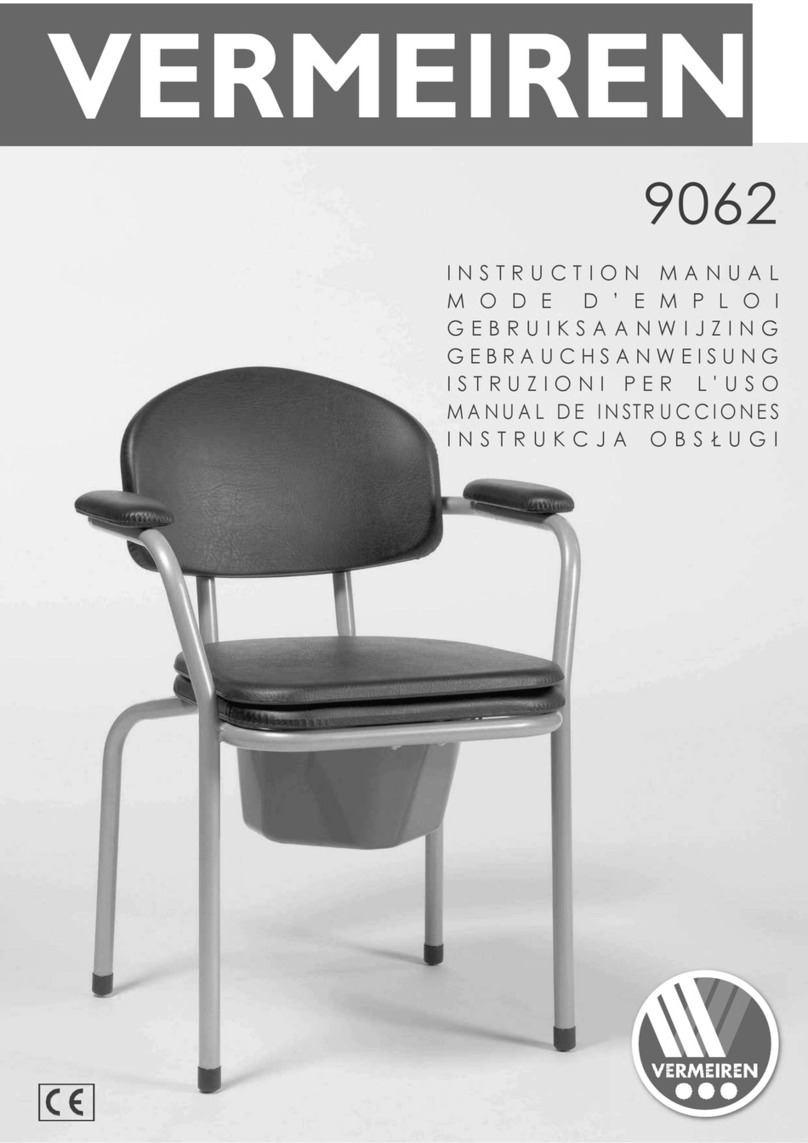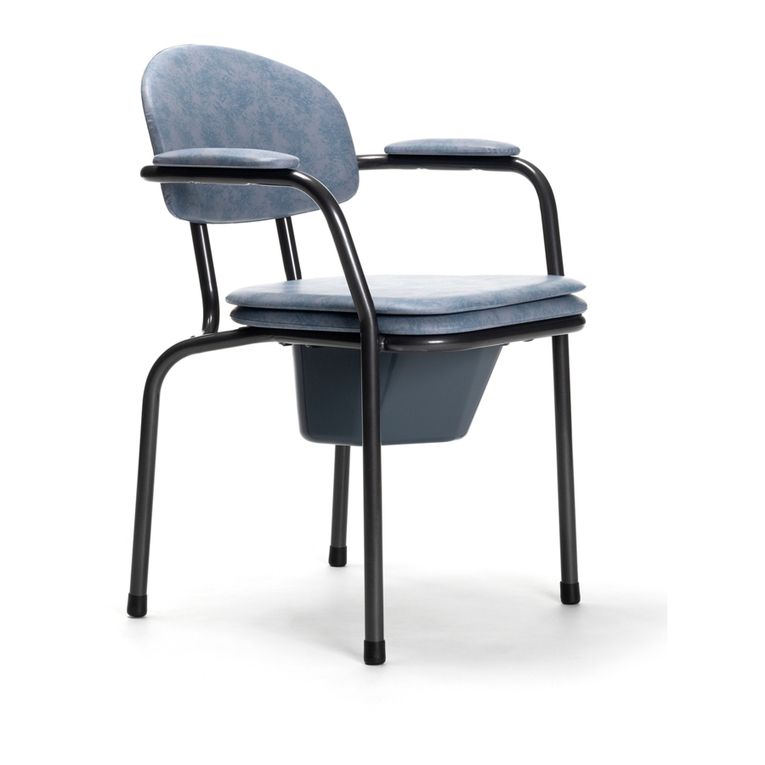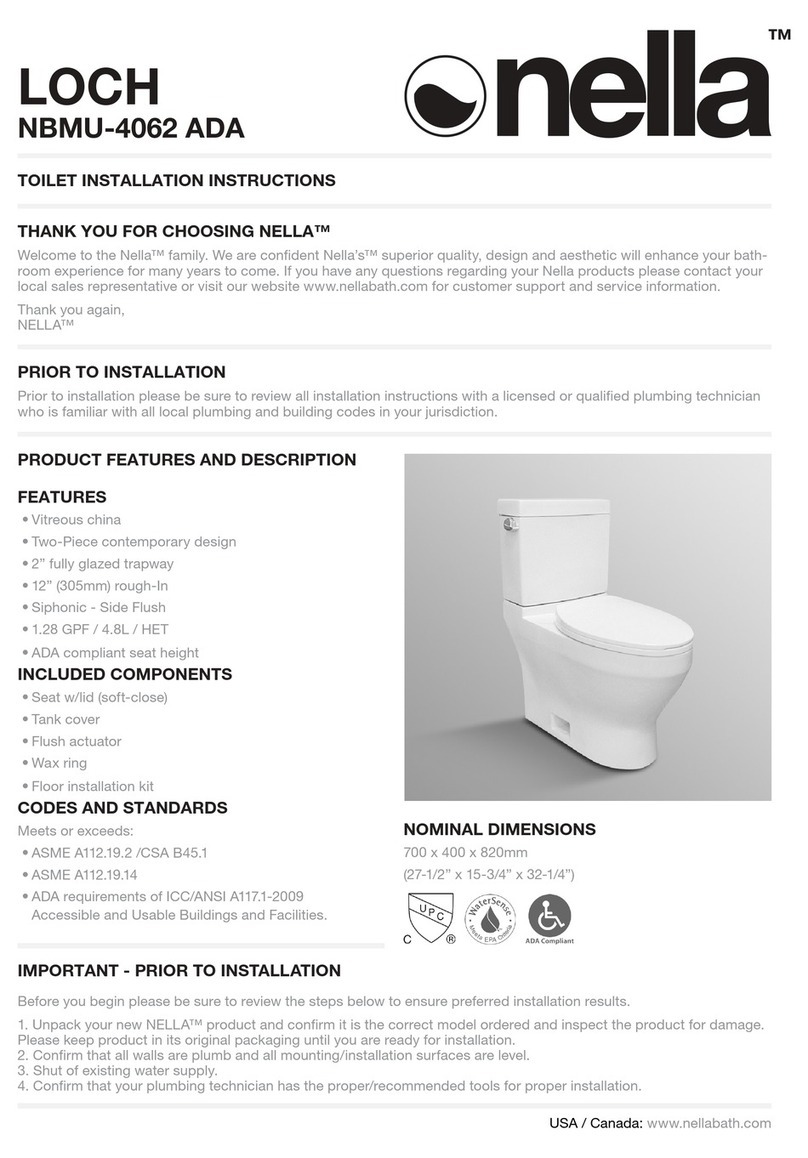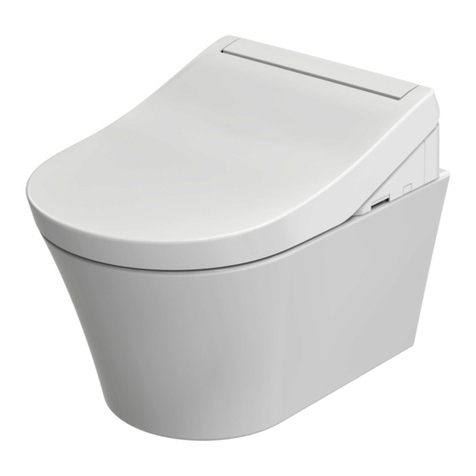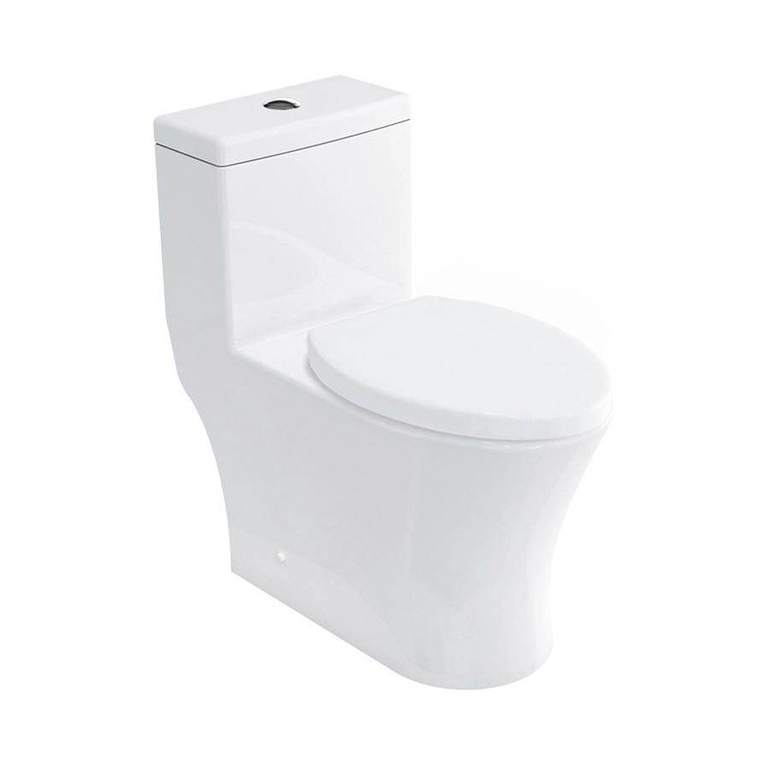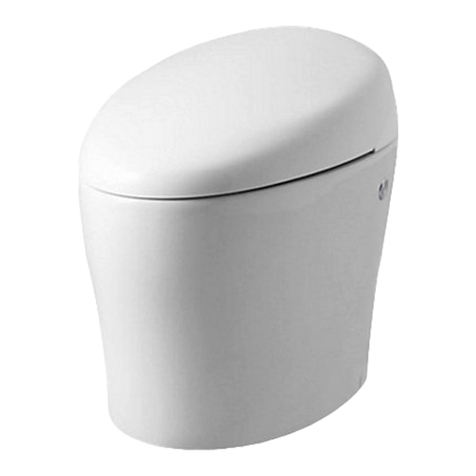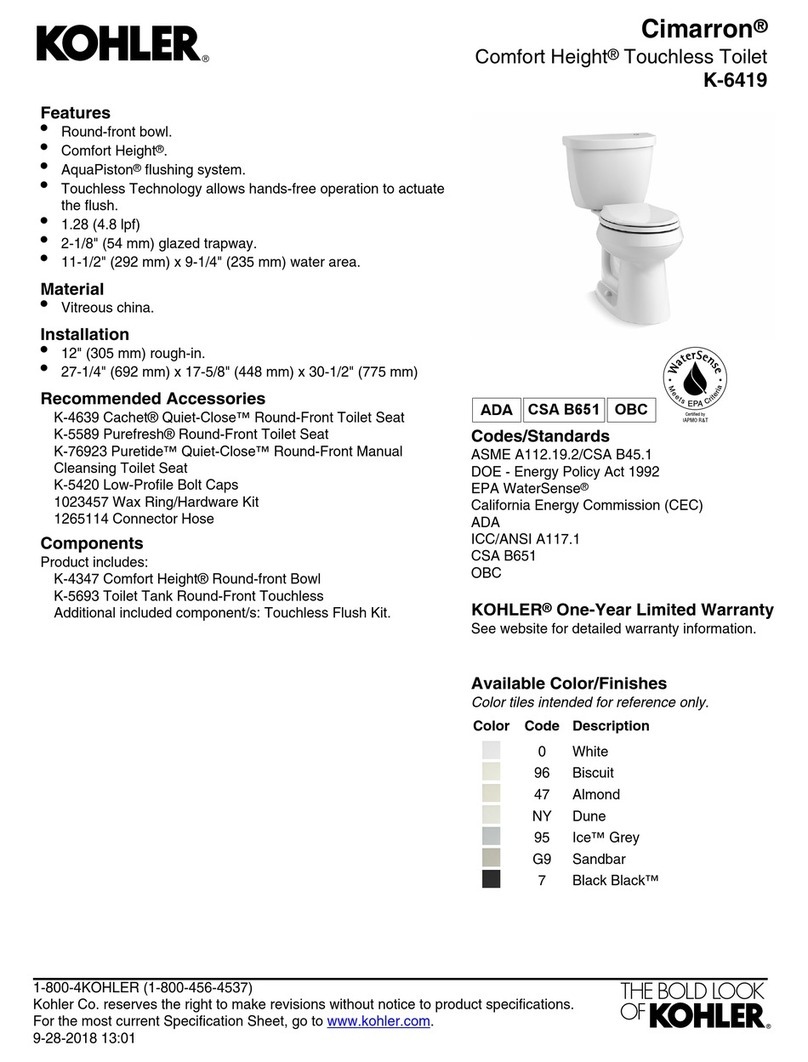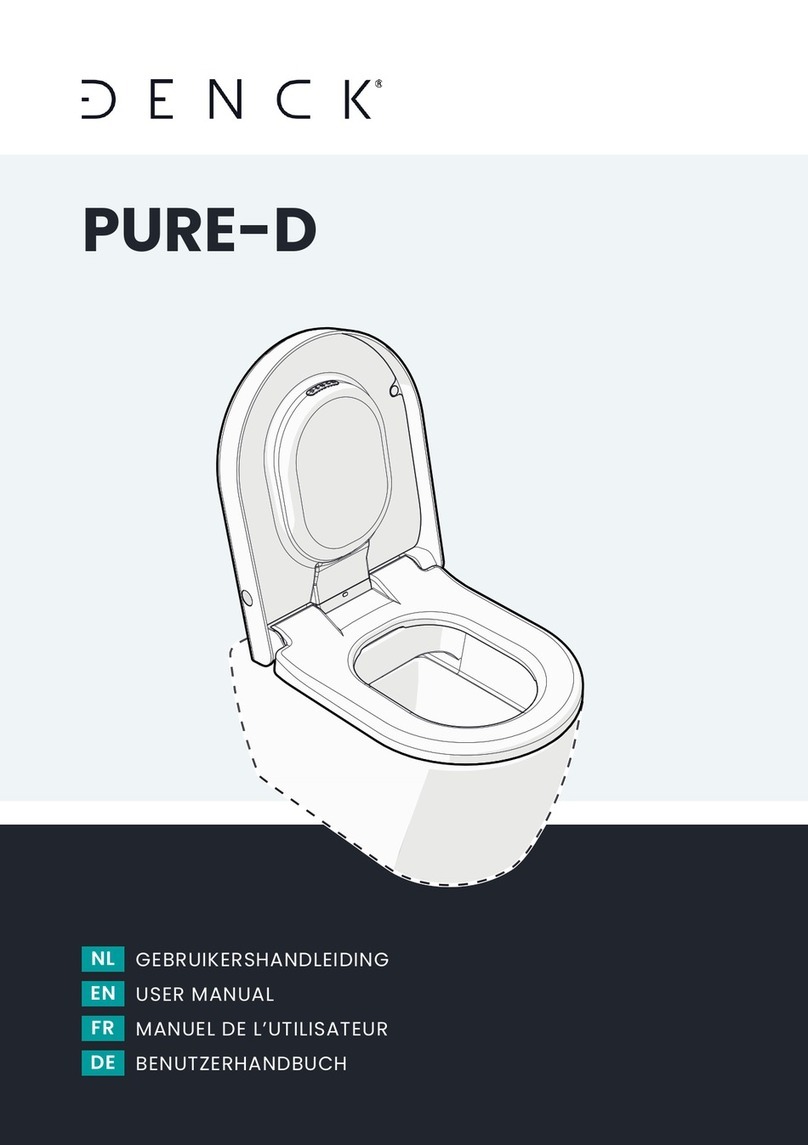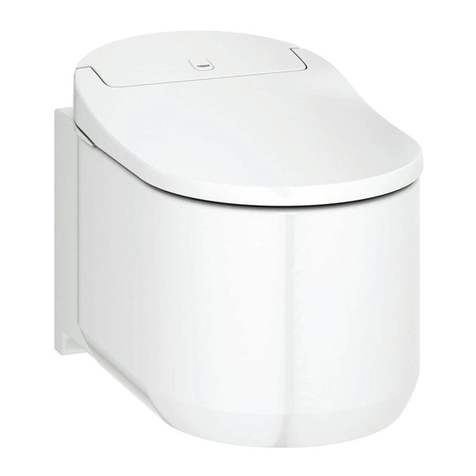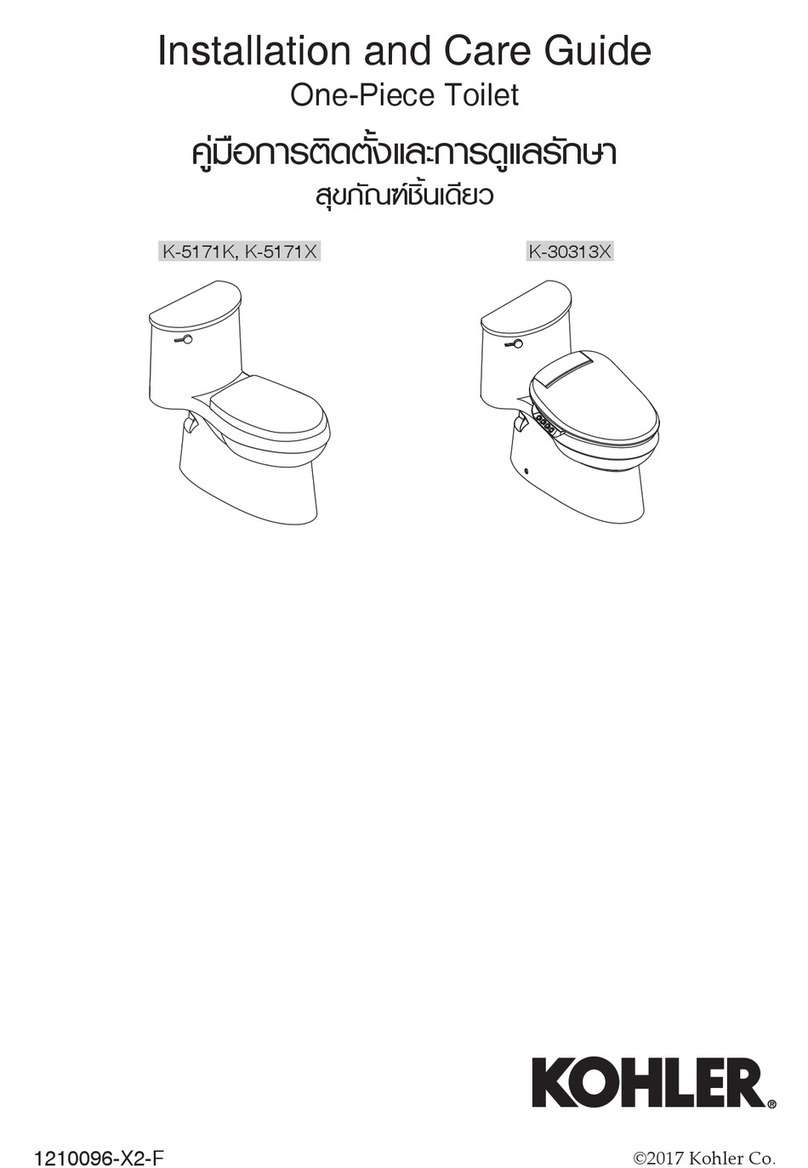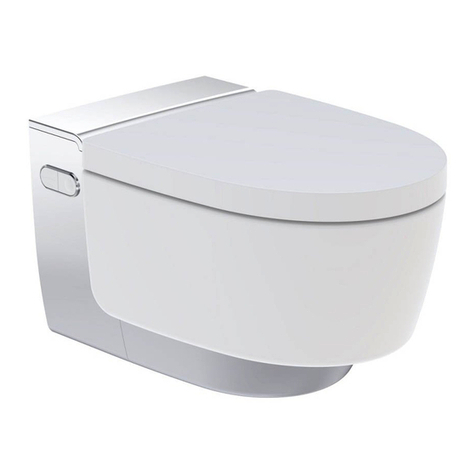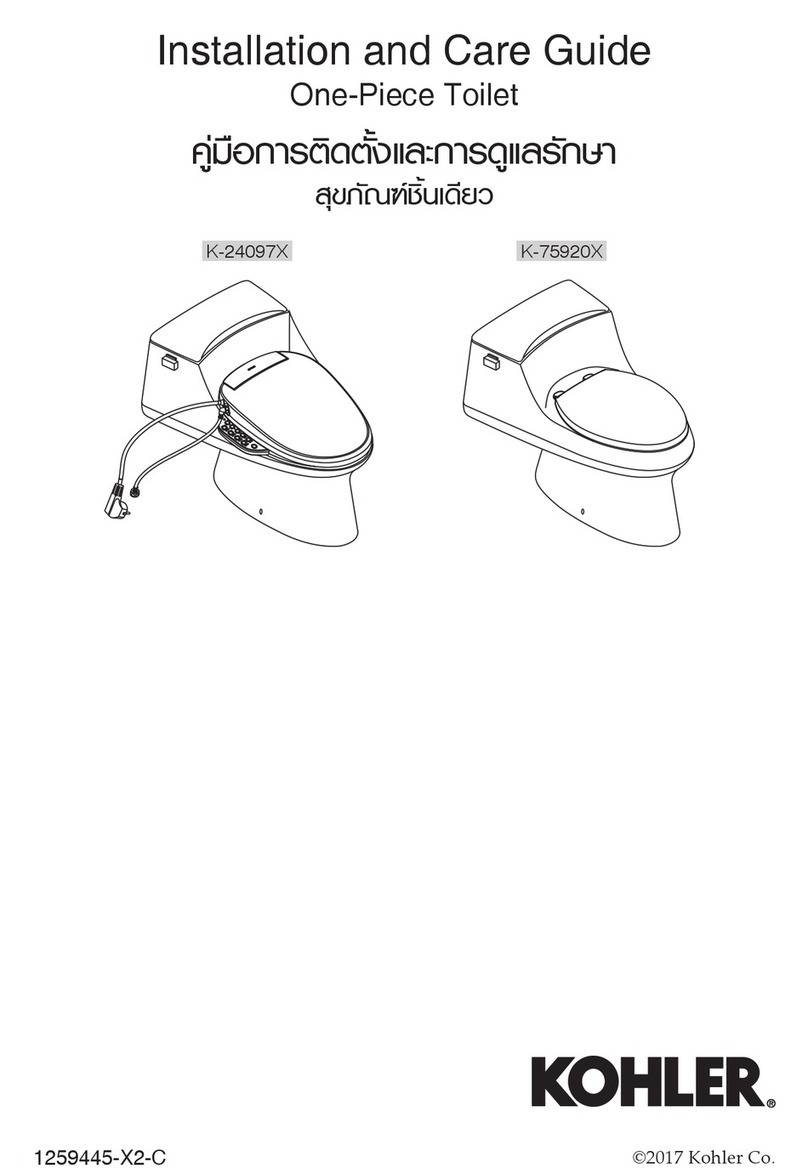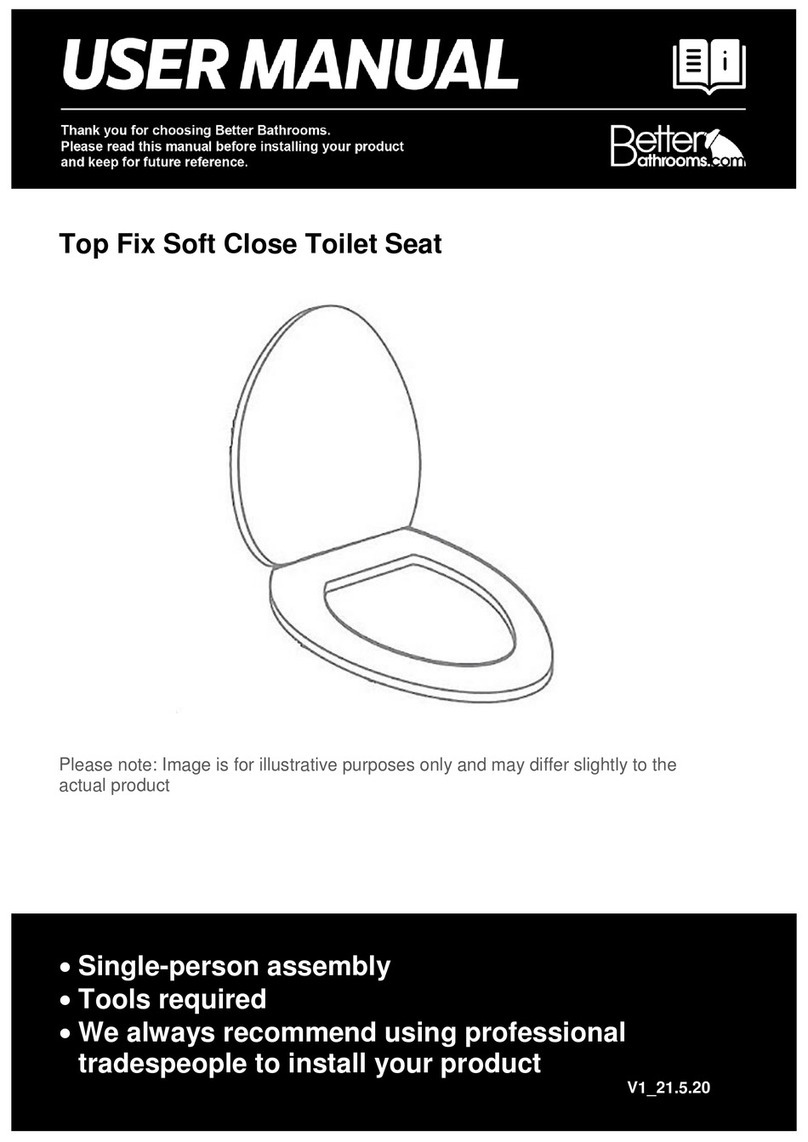
Prima di usare la comoda verificare
che tutte le quattro ruote poggino a
terra.
Non sporgersi troppo in avanti dalla
comoda, perché potrebbe ribaltarsi.
Prima di trasportare la comoda togliere
la vaschetta.
Non superare il carico massimo (valori
dati tecnici).
Far eseguire le riparazioni e le disin-
fezioni esclusivamente a personale
qualificato.
Svuoltare la vaschetta dopo ogni uso.
Pericolo di ustioni. Prestare attenzione
durante l'uso in ambienti caldi o freddi
(esposizione al sole, freddo estremo,
sauna, ecc.) per un determinato
periodo di tempo e quando si tocca il
dispositivo.
La casa costruttrice declina ogni
garanzia e responsabilità in caso di
uso improprio e di mancata
esecuzione dei controlli prescritti nelle
istruzioni per l’uso La casa costruttrice
declina ogni garanzia e responsabilità
in caso di uso improprio e di mancata
esecuzione dei controlli prescritti nelle
istruzioni per l'uso.
PULIZIA
Attenersi a quanto riportato di seguito
per la pulizia:
Imbottitura / telaio
Pulire le imbottitura / telaio con un
panno inumidito di acqua calda.
Non bagnare eccessivamente le
imbottitura / telaio.
Per rimuovere lo sporco più
resistente, utilizzare un detergente
delicato disponibile in commercio.
Eliminare le macchie con una
spugna o una spazzola morbida.
Non utilizzare detergenti
aggressivi, ad esempio solventi,
né spazzole dure.
Non pulire con dispositivi a vapore
e/o a pressione.
La casa costruttrice declina ogni e
qualsiasi responsabilità per danni
e lesioni derivanti dall'uso di
detergenti non idonei.
Componenti in plastica
Per pulire tutte le parti in plastica
della comoda, utilizzare detergenti
per plastica disponibili in
commercio. Utilizzare solo una
spazzola o una spugna morbida.
Esempio di parti in plastica sono la
vaschetta, ... .
Trattamento superficiale
La qualità elevata del trattamento
superficiale garantisce una
protezione ottimale contro la
corrosione. Se il rivestimento
esterno è danneggiato da rigature
o in altri modi, far riparare la
superficie dal rivenditore.
Durante la pulizia, utilizzare solo
acqua tiepida e detergenti per uso
domestico, con spazzole e panni
morbidi. Non far entrare umidità
all'interno dei tubi.
Per la pulizia iniziale delle parti
zincate utilizzare un panno
asciutto. È possibile rimuovere lo
sporco ostinato utilizzando un
lucidante apposito per lo zinco
disponibile in commercio.
MANUTENZIONE
La durata della comoda dipende dalle
condizioni d'uso, conservazione,
manutenzione regolare, manutenzione e
pulizia.
La comoda deve essere sottoposta a
manutenzione da parte di personale
qualificato almeno ogni due anni e
comunque prima di ogni nuovo impiego. I
seguenti aspetti devono essere verificati:
Controllo delle deformazioni plastiche
e della funzionalità delle parti del
telaio.
Esame visivo della vernice (pericolo di
corrosione).
Verifica stato imbottiture (fessure,
zone infragilite, umidità).
Tenuta stagna della vaschetta (tranne
in caso di riutilizzo).
Completezza della fornitura?
Presenza del libretto con le istruzioni.
Pulizia
La manutenzione deve essere eseguita da
personale autorizzato e documentata
come da programma. Se il rivenditore
non esegue la manutenzione rivolgersi
alla casa costruttrice, che provvederà ad
indicare il nominativo di un centro
assistenza autorizzato in zona.
DISINFEZIONE
Tutte le parti della comoda devono essere
sottoposte a disinfezione. In linea di
massima tutte le superfici devono essere
disinfettate prima di passare la comoda ad
un altro paziente (reimpiego).
L'uso di disinfettanti spetta al
personale autorizzato in possesso
della necessaria specializzazione.
Indossare indumenti di protezione
onde evitare che il disinfettante venga
a contatto con la pelle. Attenersi alle
istruzioni allegate ai prodotti
disinfettanti.
La casa costruttrice declina ogni e
qualsiasi responsabilità per danni e
lesioni derivanti da uso improprio
della disinfezione.
Utilizzare esclusivamente disinfettanti
presenti nell'elenco aggiornato del Robert-
Koch-Institut e procedimenti convalidati di
disinfezione e lavaggio con panno.
Richiedere l'elenco aggiornato dei
disinfettanti riportati nell'elenco RKI al
Robert-Koch-Institut (RKI) (homepage:
www.rki.de).
La vaschetta può essere pulita con
detergenti, ma non è adatta alla
sanificazione ospedaliera.
Le parti di ricambio possono essere
richieste al rivenditore autorizzato.
TRASPORTO E CONSERVAZIONE
Attenersi alle istruzioni seguenti per il
trasporto e lo stoccaggio della sedia da
comodo :
Conservare solo in ambienti asciutti
(+5°C - +41°C).
Umidità relativa tra 30 e il 70 %.
Assicurare sufficiente protezione o
imballaggio da preservare la comoda
da ruggine e corpi estranei (per es.
acqua salata, aria di mare, sabbia).
GARANZIA
Tranne per le "Condizioni generali
aziendali":
(...)
5. In alcuni paesi le condizioni della
garanzia possono differire. Consultare il
rivenditore per il periodo relativo al reclami
in garanzia.
(...)
Non rientrano in garanzia danni derivanti
da modifiche strutturali ai prodotti, scarsa
manutenzione, gestione o conservazione
difettosa o impropria, né utilizzo di parti
non originali.
SMALTIMENTO
Al momento dello smaltimento della sedia
da comodo, contattare il centro di raccolta
locale o restituire il prodotto al rivenditore,
che dopo averla sottoposta a una
procedura igienica la potrà inviare al
produttore che la smaltirà e riciclerà nel
modo corretto, separando componenti e
materiali.
I materiali di imballaggio possono essere
portati ai centri di raccolta o riconsegnati
al rivenditore.
DICHIARAZIONE DI CONFORMITÀ

